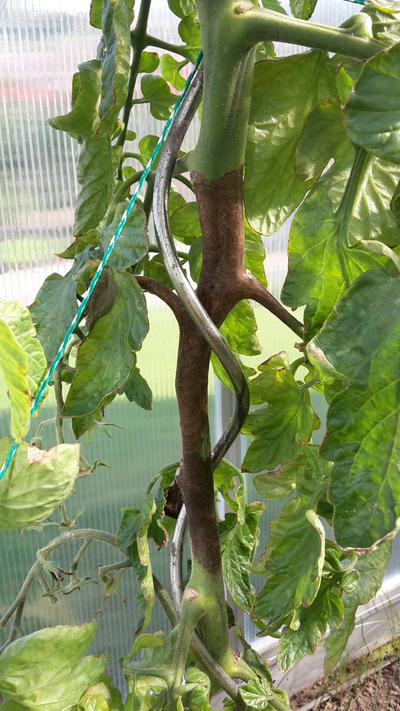Stem Rot of Tomato
Didymella lycopersici
Fungus
In a Nutshell
- Dark, clear-cut sunken spots on the lower part of stems.
- Minute black specks are visible on the affected tissues.
- Plant wilts and gradually withers.
- Fruits turn black and shrivel.
Can also be found in
Symptoms
Infection usually occurs on the stem at or above the ground, but leaves in contact with the soil could also be affected. Brown, clear-cut and sunken spots first appear on the stem. As they develop further, these lesions may girdle the stem, leading to the wilting and later the withering of the plant. Minute black specks are visible on the affected tissues. Secondary lesions or cankers may develop later higher up the stem. Splashing water disperses the spores to other plant parts, resulting in additional infections and disease spread. Affected fruits turn black and start to shrivel up.
Recommendations

Organic Control
Preventive measures are the best option to avoid the disease or reduce its incidence. Some strains of the fungi Trichoderma harzianum give a good control of D. lycopersici and results in yield increases.

Chemical Control
Always consider an integrated approach with preventive measures and biological treatments if available. Preventive measures are the best option to avoid the disease or reduce its incidence. Fungicide treatments can be effective if applied in a timely manner. Products based on chlorotalonil can be useful to prevent new infections.
What caused it?
The symptoms are caused by the fungus Didymella lycopersici, which can survive in the soil and in infected plant debris. The fungus easily penetrates through the wounds caused by routine trimming for example. Alternative hosts are limited to the family of nightshade, to which tomato belongs. The spots on the leaves contain the cushions that produce the spores. These are later transported through wind or rain splashes onto healthy plants. It is also thought that the disease can be transmitted via infected seeds. Didymella stem rot occurs over a wide range of conditions. However, cool temperatures (20°C), wet weather with splashing rain or the use of overhead irrigation are optimal. Plants also become more susceptible as they mature, and deficiency of soil nitrogen and phosphorus can contribute to disease severity.
Preventive Measures
- Use healthy seeds from certified sources.
- Plant resistant varieties.
- Provide adequate space to plants when growing plants in the greenhouse to favor ventilation of the canopy.
- Avoid contact of lower leaves with the soil or simply remove or prune them.
- Water plants in the morning and avoid overhead irrigation.
- Ensure a diversified crop rotation over at least 3 years.
- Plan a solarization of the soils during several weeks.
- Make sure not to injury plants during field work.
- Remove infected plants as soon as spotted.
- Remove volunteer plants, weeds and alternative hosts in and around the field.
- Remove all plant debris after harvest and burn them.
- Make sure to disinfect poles and tools after field work.
- In glasshouses, keep the humidity below 90% and the temperatures above 15°C.
- Use reed canes (Arundo donax) or Eucalyptus stakes to support tomatoes as this reduces disease incidence.



